Edvard Munch’s retreat – a secret hideaway to scream about
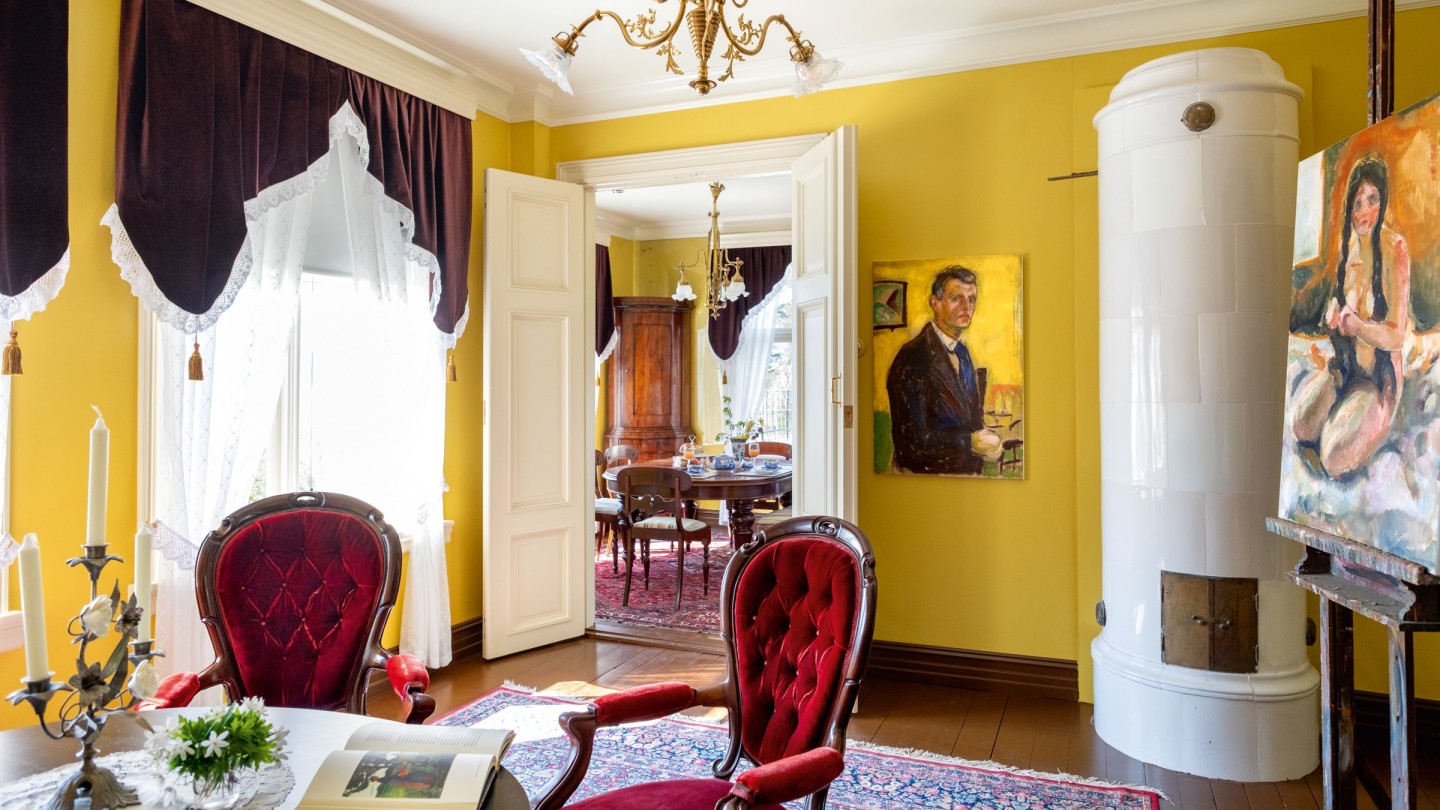
Roula Khalaf, Editor of the FT, selects her favourite stories in this weekly newsletter.
“It’s the only place where I can have peace,” Edvard Munch once wrote about the secluded Nedre Ramme estate near the small town of Hvitsten on the Oslofjord. Cradled in its own private cove some 40km south of Oslo, the summer house here provided respite from society for the Norwegian painter and printmaker, and acted as a sanctuary where he could calm his nerves. It was here that he painted many of his late masterpieces, including a monumental series of works for the University of Oslo auditorium.
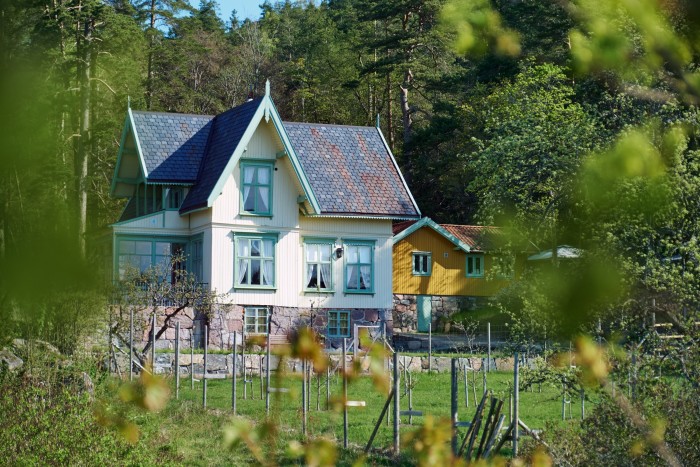
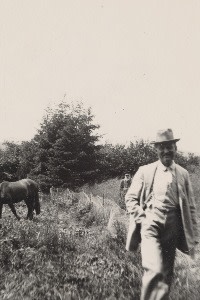
Born in 1863, Munch became celebrated for exploring themes of mortality, desire and nature in a colour-soaked expressionist style – most famously in The Scream. He bought the summer house in 1910, shortly after his recovery from a nervous breakdown, and retained it until his death in 1944. In subsequent decades, the property became a private home, before being bought in 2010 by Petter Olsen, whose family history is intertwined with that of the artist. Following a long restoration, the four-double-bedroom retreat has now reopened its doors.
It’s hard to argue with Munch’s claim that the villa is the “prettiest property” on the fjord. From the surrounding farmland, you approach the house via a long lane canopied by ash, pine and fir, to a blind stop on the water’s edge. On the right, the house sits high on the embankment, foregrounded by a newly planted apple orchard and a large, lone pear tree. It’s a beguiling prospect where the sea meets the rocky shoreline and still pines, and the house’s many windows refract the soft marine light.
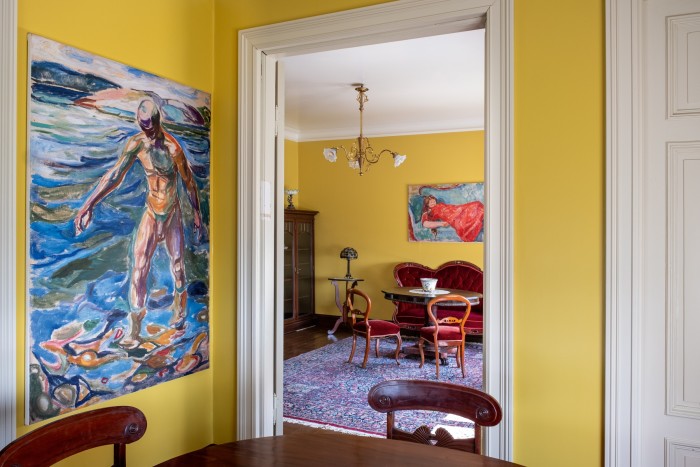
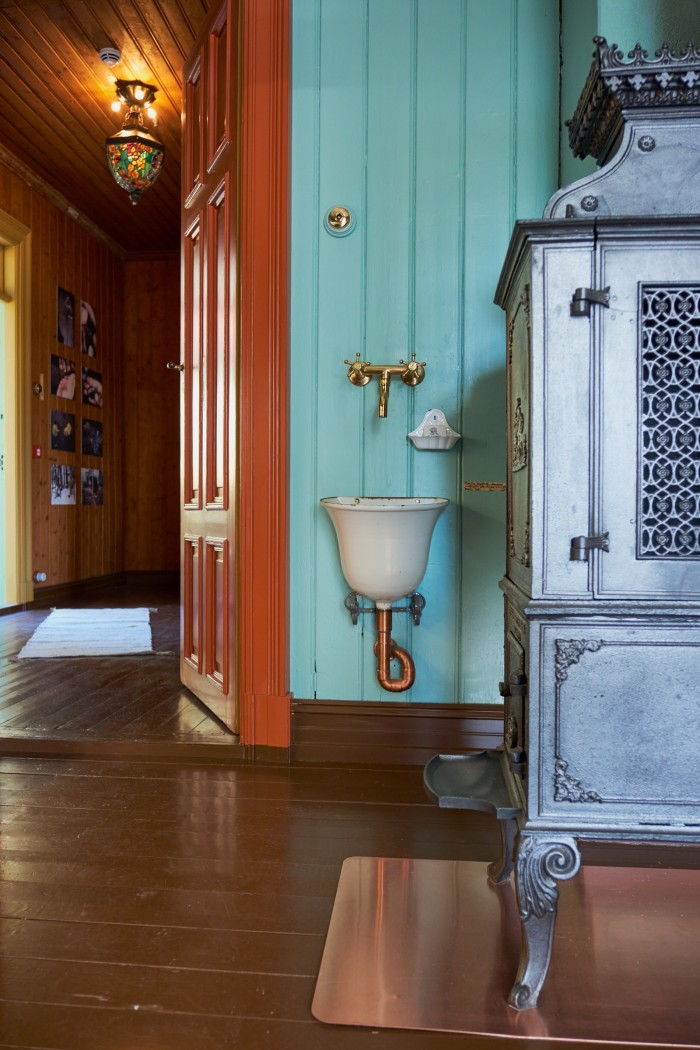
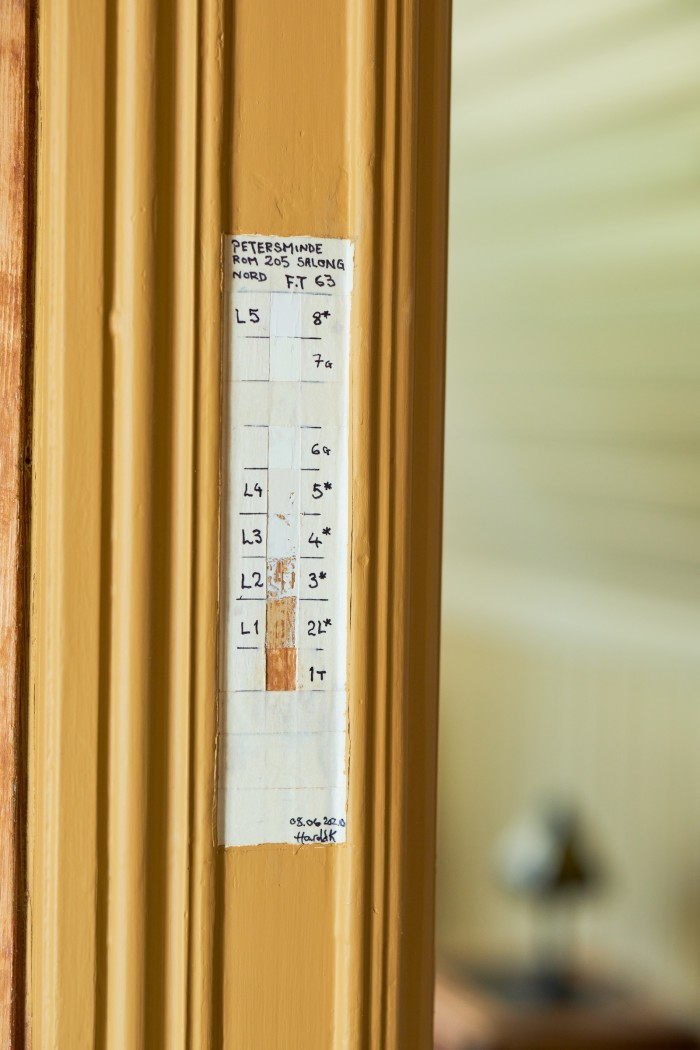
Inside, one is greeted by the heady smell of wood. Four bedrooms, one with a vintage stove, are named after the painter and his friends – Edvard, Jappe, Gustav, Hans – and, together with the kitchen, dining room and living room, are all painted in the artist’s dopamine colour scheme. The palette echoes the background of several of Munch’s portraits, and for good reason. As the artist once noted: “My yellow room at Nedre Ramme is still the best bedroom in the world.”
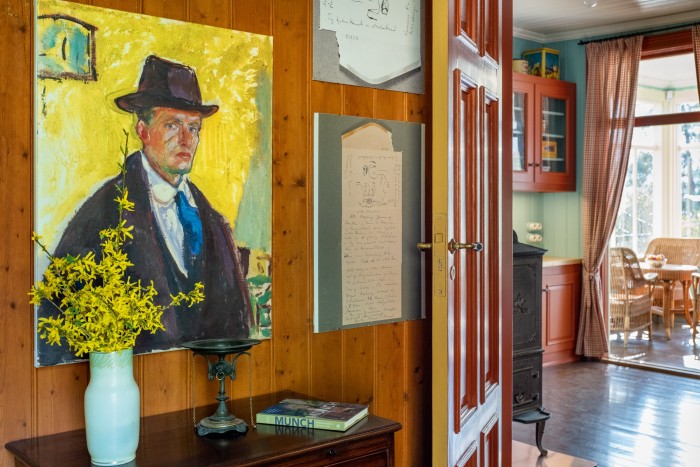
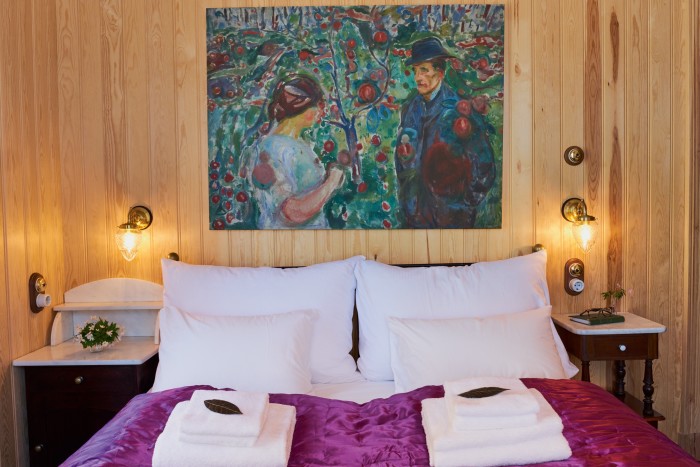
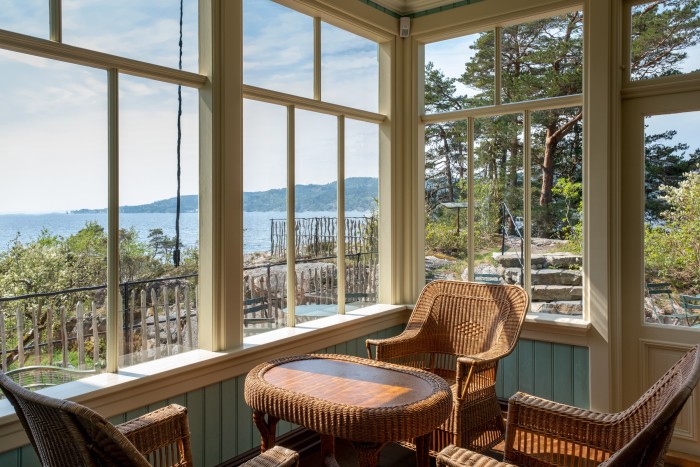
The restoration project has been a “journey of discovery and conquest”, says Olsen, who is particularly proud of having discovered, through colour archaeology, Munch’s own blend of lemon yellow that was used on the walls of the living and dining rooms. Likewise, he adds, “we have searched the grounds, and located the spots where he painted.” The artist experimented with vitalism, the notion that all living things are powered by a vital or life force, and he painted many nudes here en plein air: often his housekeeper, Ingeborg, who posed on the rocks. “We have also identified his outdoor studio,” adds Olsen. “Behind the building next to the house.”
Other features also remain: Munch’s original outhouse WC still stands by the pine trees behind the house (though there are other loos inside). On one wall is the ghostly outline of Munch’s telephone. One of Olsen’s next ventures is to restore the quay: guests might soon be able to moor their boat in the cove.
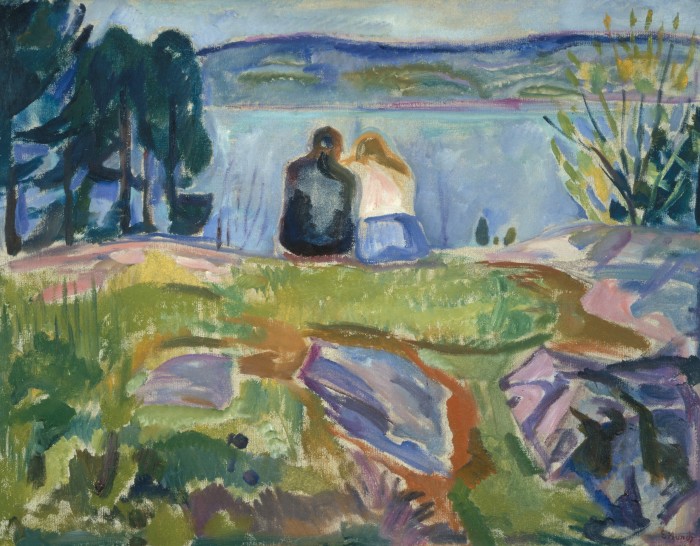
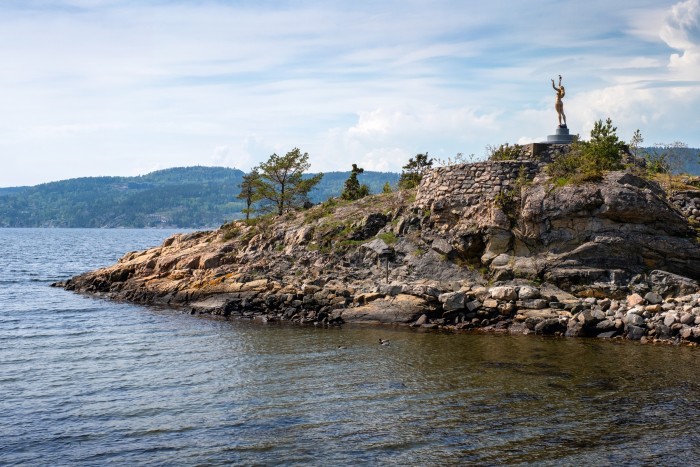
Olsen’s connection to Munch is through his father, Thomas Fredrik Olsen, a prominent Norwegian ship-owner of the early 20th century and a patron of the artist. The family has one of the great collections of the artist’s work. In 2012, a version of The Scream from the Olsen Collection was sold at Sotheby’s for nearly $120mn. The proceeds funded the development of the Ramme estate and the restoration of Munch’s house.
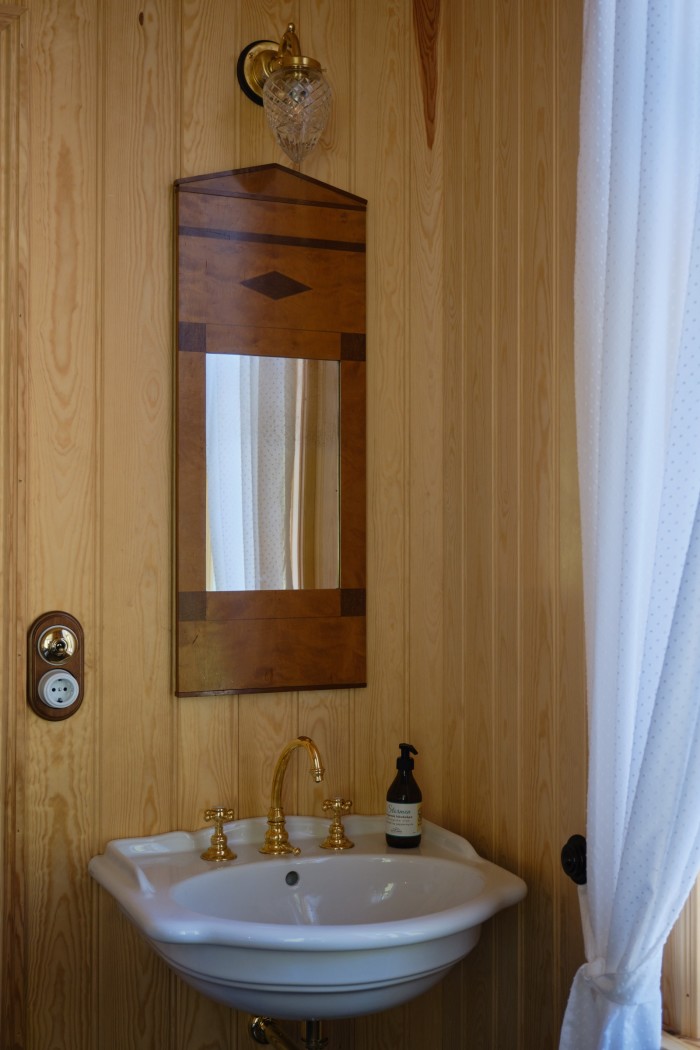
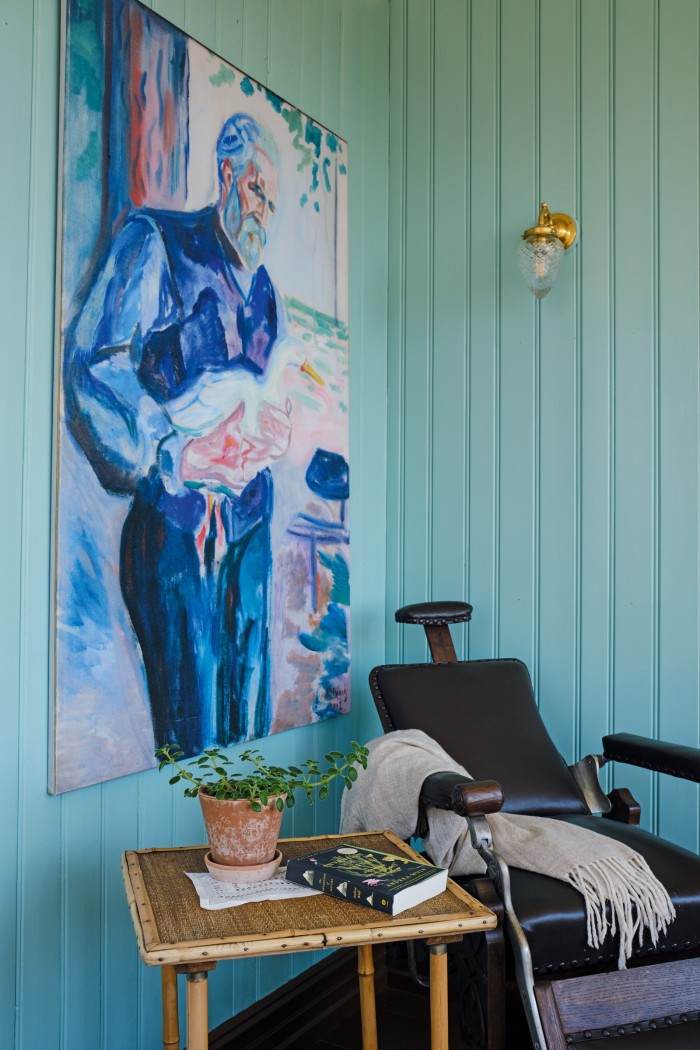
Olsen lives nearby, beside an organic farm with rare breeds of Norwegian cattle, poultry and sheep. He also has an opulent yet cosy hotel, Ramme Fjordhotell, and a gallery that houses his collection of paintings by Munch – including summery portraits of Olsen’s mother, Henriette – and other Norwegian masters. Among the works on show are Munch’s paintings of views from Nedre Ramme – out across the fjord to the crystalline landscape. It’s a buzzy sibling to the secluded summer house.
Today, for all its colour-saturated homages to the artist, ultimately the villa remains a bucolic escape from the hurly burly. As Munch declared in a letter to a friend, it has “an outlandish charm and even a few days’ stay there is an experience and rest for me”. One imagines that a new generation of visitors will feel much the same pull and, like Munch, will be “travelling back down as soon as possible”.
Villa Munch, from NKr125,000 per night (about £9,300); ramme.no
Comments